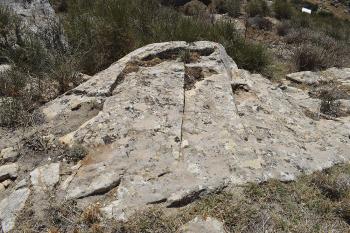American Journal of Archaeology | The Journal of the Archaeological Institute of America
You are here
The Granite Quarry at Xobourgo, Tenos: Patterns of Extraction and Exploitation Through Time
October 2023 (127.4)
The Granite Quarry at Xobourgo, Tenos: Patterns of Extraction and Exploitation Through Time
An extended area of quarrying activity has been located at Xobourgo, on the Greek island of Tenos, where extraction continued for millennia to the north of the ancient settlement. The quarrying was centered on the protuberance of Xobourgo, a leucogranite outcrop that lies to the southwest of a larger granodiorite zone. The joint study of the material’s properties, the quarry’s layout, the extraction traces, and the use of leucogranite in constructions at Xobourgo shows that the quarrying activity was related to local building projects, especially fortifications. These are dated to the period that spans from the Early Iron Age (11th–10th century BCE) to the end of the Classical period (end of the fourth century BCE), as well as to the era of Venetian rule (1204–1715 CE). Extraction techniques differed through time depending on available tools, traditions, and the type of masonry. The leucogranite was exploited for its endurance, workability, and aesthetic value. Extraction so close to the adjacent settlement was also advantageous due to low transport costs. High levels of stoneworking skill, in line with the scale of constructions undertaken at the site, are diachronically attested.
The Granite Quarry at Xobourgo, Tenos: Patterns of Extraction and Exploitation Through Time
By Athina Boleti
American Journal of Archaeology Vol. 127, No. 4 (October 2023), pp. 525-543
DOI: 10.1086/725862
© 2023 Archaeological Institute of America


